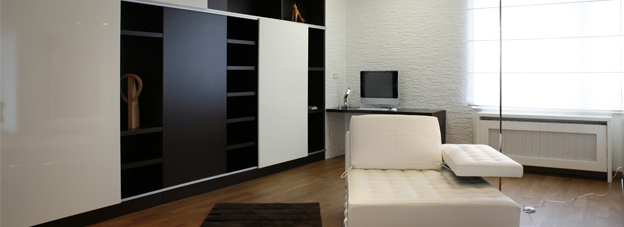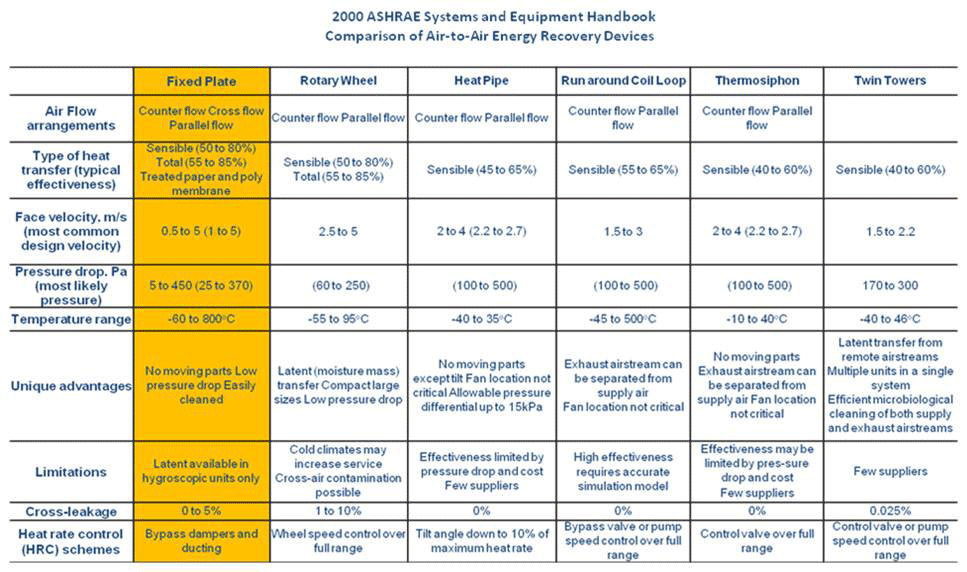../images/
what_is_an_up.gif
what_is_demand_up.gif
how_does_up.gif
what_is_an_over.gif
what_is_demand_over.gif
how_does_over.gif
When ventilation takes place within an air-conditioned premise, the stale air from the premise is thrown out and fresh air from outside is sucked in. Because the fresh air coming in from the outside has not been “conditioned”, it increases the load on the system. Hence your energy costs increase as it has to now cool this new fresh air.
Our ERV system, consisting of a core unit fixed plate energy exchanger, reduces this load on the system. The warm fresh air getting sucked in from outside and the cold stale getting thrown out from inside pass each other through this core unit. Without actually mixing with each other, the two air steams reach a state of thermal equilibrium. Hence the fresh air now gets cooled before entering the premise and thus reduces the load on the system.
Click here to view the working of an Energy Recovery Ventilator
Our ERV system, consisting of a core unit fixed plate energy exchanger, reduces this load on the system. The warm fresh air getting sucked in from outside and the cold stale getting thrown out from inside pass each other through this core unit. Without actually mixing with each other, the two air steams reach a state of thermal equilibrium. Hence the fresh air now gets cooled before entering the premise and thus reduces the load on the system.
Click here to view the working of an Energy Recovery Ventilator
All ventilated premises have certain preset parameters within the system. Depending on your occupancy, load and various other factors, your premise has been programmed to ventilate a certain amount of air every hour. This ensures that your premise receives a continuous supply of fresh air.
When ventilation takes place, the fresh air coming in from the outside has to be conditioned. This increases the load on your system and your energy costs.
Our Demand Ventilation system consists of a CO2 sensor and controller. It works on the principle that you ventilate your premise only when there is a need or “demand” for it. Hence, if you have a premise with variable human occupancy, your need for ventilation also probably varies. Our system will control this ventilation flow and will ventilate only when the CO2 levels within the premise exceed the preprogrammed CO2 levels.
When ventilation takes place, the fresh air coming in from the outside has to be conditioned. This increases the load on your system and your energy costs.
Our Demand Ventilation system consists of a CO2 sensor and controller. It works on the principle that you ventilate your premise only when there is a need or “demand” for it. Hence, if you have a premise with variable human occupancy, your need for ventilation also probably varies. Our system will control this ventilation flow and will ventilate only when the CO2 levels within the premise exceed the preprogrammed CO2 levels.
Our ERV solution is based on a fixed plate energy recovery heat exchanger. This technology is far more advantageous compared to other types of exchangers. The table below from the 2000 ASHRAE (American Society of Heating, Refrigeration, and Air-Conditioning Engineers) Systems and Equipment Handbook explains how.
Click here to view the ASHRAE Table
Applications
Our ventilation systems can be used anywhere where there is a lot of human occupancy. Our systems are designed to reduce your monthly energy costs and your original tonnage requirements.
Some examples of where the systems can be used are:
Click here to view the ASHRAE Table
Applications
Our ventilation systems can be used anywhere where there is a lot of human occupancy. Our systems are designed to reduce your monthly energy costs and your original tonnage requirements.
Some examples of where the systems can be used are:
- Auditoriums
- Call Centres
- Corporate offices
- Factories - Process Areas
- Gymnasiums
- Homes
- Hospitals - Operation Theatres
- Hotels
- Mega Retail Stores
- Restaurants
- Schools
- Shopping Malls
- Pharmaceutical industries



